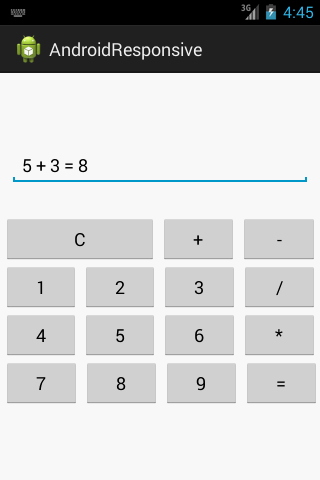


Using Fragment, you can extract your UI logic into separate components so that while designing multi-pane layouts for large screen sizes, you do not have to define the logic separately.
ANDROID RESPONSIVE LAYOUT ANDROID
In Android, you can define separate layout files for different screen sizes, and the Android framework handles the switching between these layouts automatically as per the screen size of the device. For example, you can use split view in devices like tablets to provide a good user experience and use the large screen real estate wisely. To solve the above issue, you can use alternative layouts for different-sized devices. This also applies to devices like smartwatches, which have very little screen real estate, and resizing the components to fit that screen size might result in a weird UI. ConstraintLayout allows you to specify the position and size for each view according to spatial relationships with other views in the layout.įor more information regarding ConstraintLayout, check out this article here.īut this does not solve the issue with large devices, where just stretching or resizing the UI components is not the most elegant way of taking advantage of the screen real estate. It can be used for creating flexible and responsive UI designs that adapt to different screen sizes and dimensions. One of the revolutionary tools introduced in the Android world for UI design is the ConstraintLayout. In order to handle different screen sizes and pixel densities, the following concepts are used in Android: 1.


 0 kommentar(er)
0 kommentar(er)
